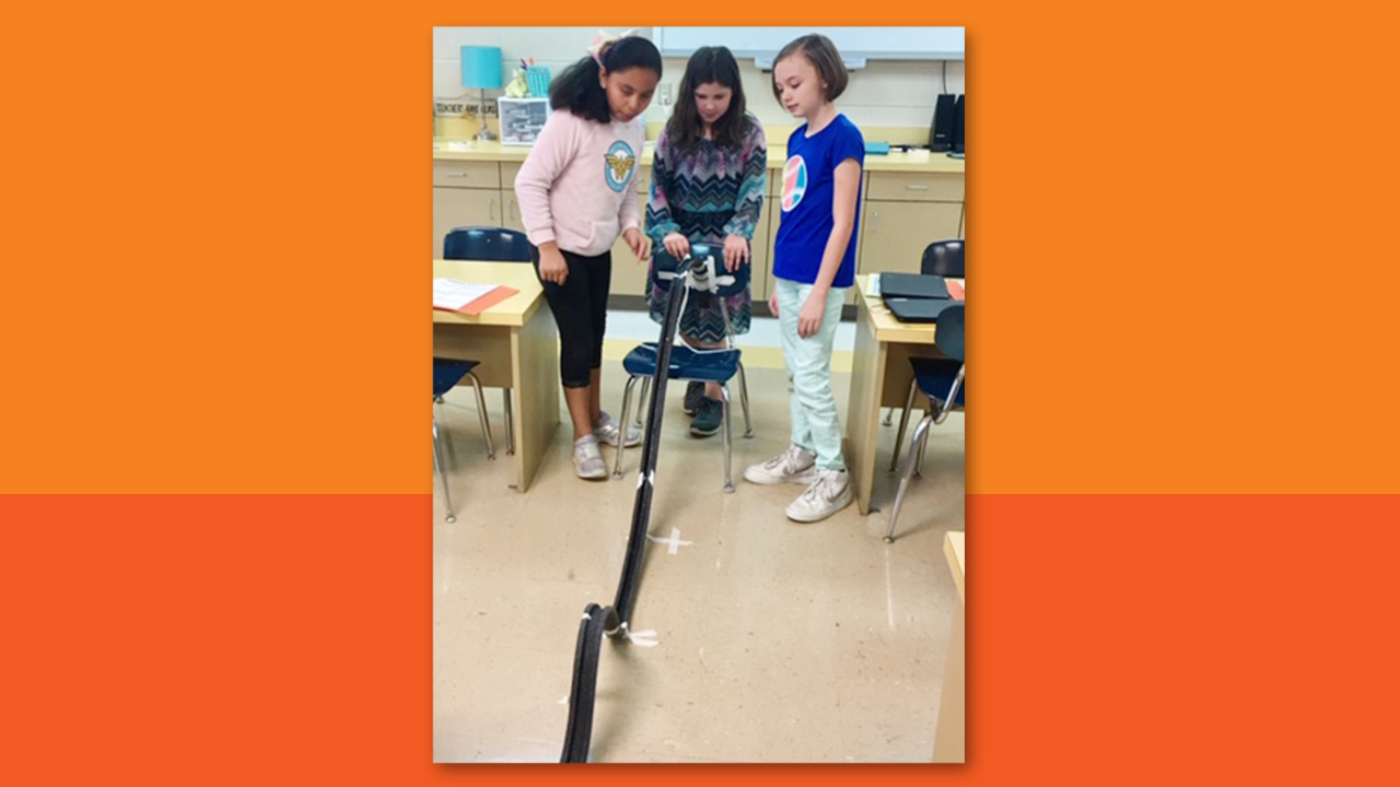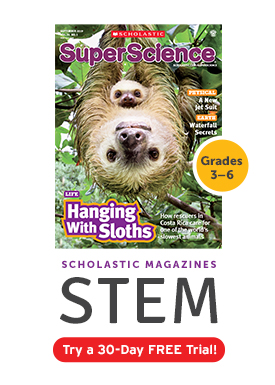Key Takeaways:
- The 5E model is inquiry-based, which gives students autonomy in their learning.
- You are not expected to complete the 5E’s in one day or lesson. My lesson below was completed in 5–7 days, allotting an hour each day.
- Each article in Scholastic’s SuperScience magazine provides an opportunity for teachers to apply the 5E model.
Back-to-school is an exciting time of the year—setting up classrooms, making name tags, attending professional development and preparing curriculum! This year, as you get ready to teach elementary science, think about implementing the 5E instructional model. The 5E’s are engage, explore, explain, elaborate and evaluate.
As an educator, I have implemented a wide range of strategies and methods to develop conceptual skills and processes in science. The 5E instructional model allows students to develop a deeper understanding of concepts through engagement and exploration before formal terms are presented. Scholastic’s SuperScience magazine and its resources can easily fit into this instructional model.
For example, during the last school year, I used the article “Built for Thrills!” from the March 2019 issue to explain to my 3rd- and 4th-grade gifted students how energy and force affect the design of roller coasters. I designed this unit using the 5E model. That allowed my students to develop a conceptual understanding of engineering design and forces through engaging, hands-on lessons.
Here’s how I implemented the 5E model with the SuperScience article:
ENGAGE: This phase engages students with an activity that captures their interest and provides opportunities for them to share what they already know about a topic. To engage students, I facilitated a whole-class discussion with open-ended questions like:
“How do roller coasters move freely?”
“Why are roller coasters thrilling or exciting to most people?”
Then students logged onto the SuperScience website and watched the video, “Record Roller Coasters!” Afterwards, students discussed in small groups how roller coasters have changed through the years.
EXPLORE: In this phase, students carry out hands-on activities that allow them to explore a concept or process a skill. I had students design, build and test roller coasters for speed based on the potential energy released into kinetic energy. The roller coasters varied in height and length, which allowed students to test different models.
EXPLAIN: In this phase, students learn complex terms and concepts to develop an explanation of the phenomenon they have experienced. This phase can be teacher- or student-directed.
I decided to let students direct their own learning by working in small groups or pairs to read the SuperScience article, “Built for Thrills!” They selected important information that helped them develop a better understanding by highlighting text throughout the article. They analyzed the diagrams and pictures related to how roller coasters work. Then students participated in a whole-class discussion about how energy and force affect the success of roller coasters.
ELABORATE: This phase provides opportunities for students to apply what they have learned to a new situation. The SuperScience article provided two resources to implement this phase: a STEAM challenge called “Marble Painting” and an online game called “Roller Coaster Engineer.” The hands-on activity is a fun, creative investigation to further develop concepts related to energy. The game allows students to apply concepts learned and to virtually build a safe and successful roller coaster. My students loved the game and discovered new ways to design a roller coaster. Note: The game and hands-on STEAM challenge could be used in the Engage phase as well.
EVALUTE: The final phase provides an opportunity for students to review and reflect on their own learning and new understanding of skills. I decided to use one of SuperScience’s skill-builder activity sheets for students’ evaluations. My students completed the activity “Postcard Summary,” where they wrote to a friend or family member about how they designed a new roller coaster and how energy and forces made the ride thrilling.
If you’re looking for more ways to connect science concepts to your students’ lives, I highly recommend SuperScience magazine. You can even try it free for 30 days when you place an order for the 2019–2020 school year. I’m sure your students will love all the fascinating articles and team-building activities as much as mine do!
Michelle Gay has been an educator for more than 20 years. A lifelong lover of science, she serves as the Gifted Specialist at Foley Elementary School in Foley, Alabama.

